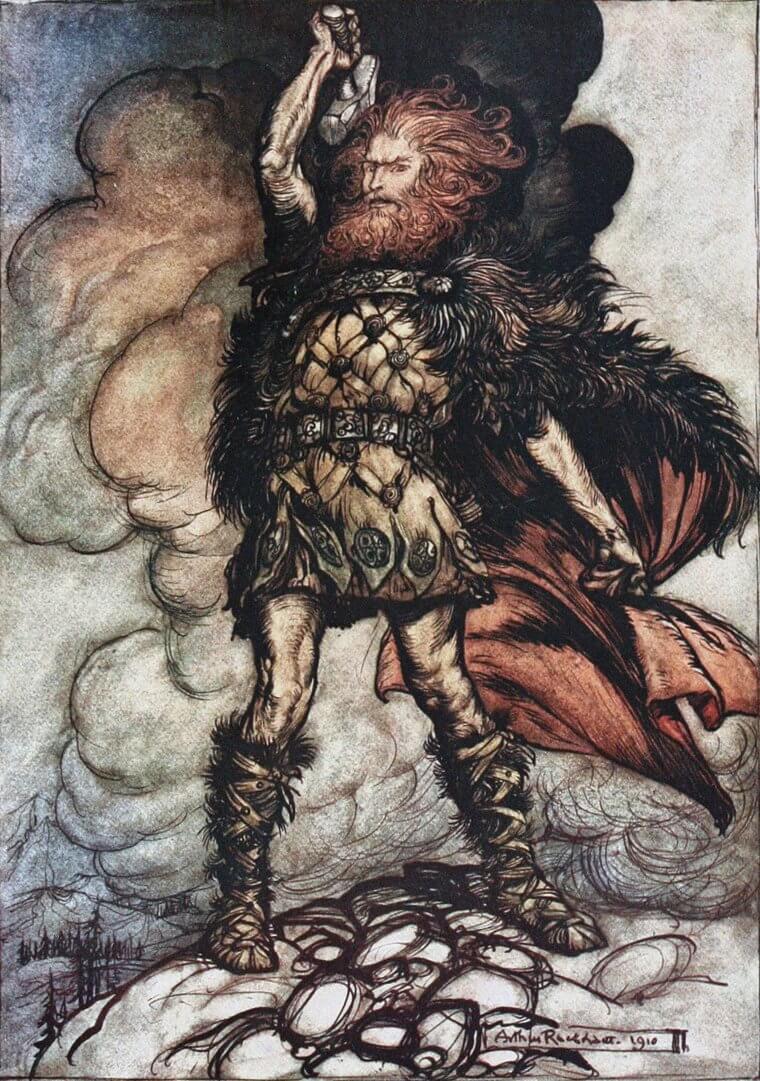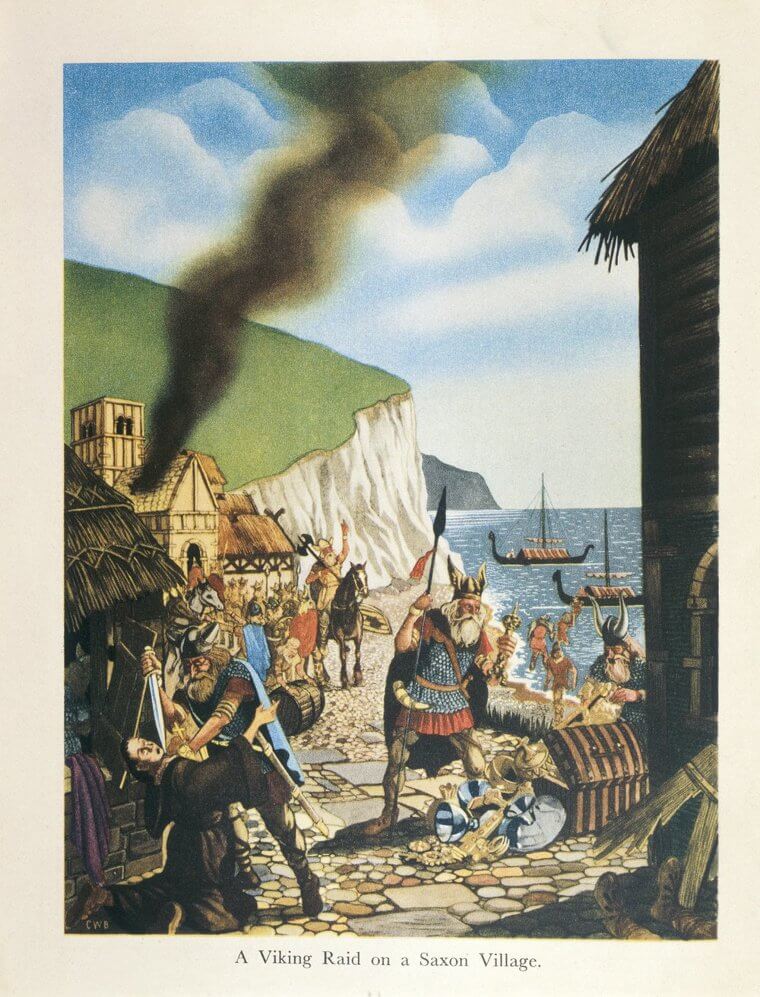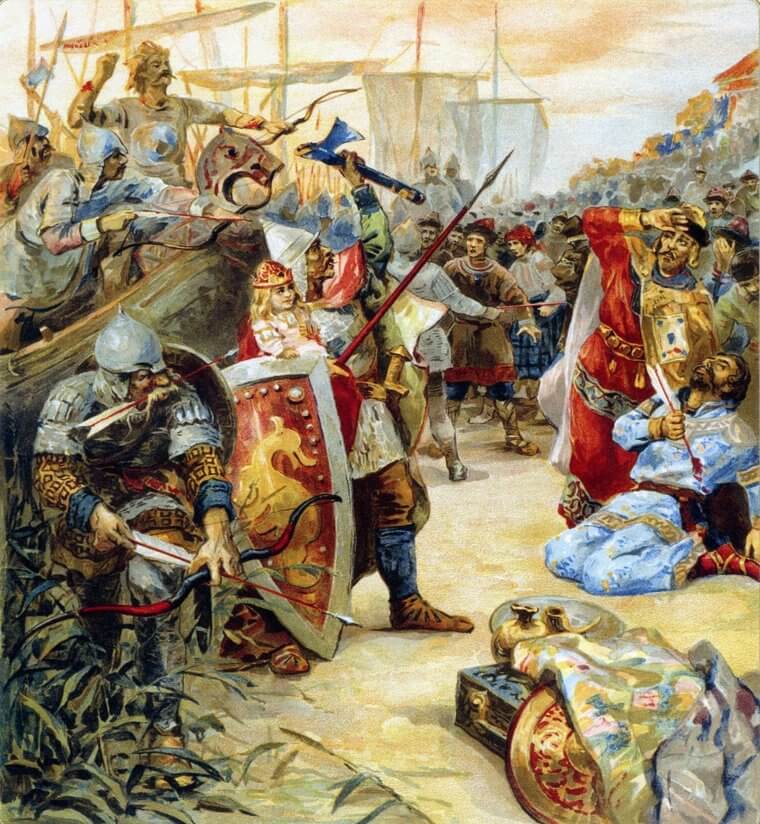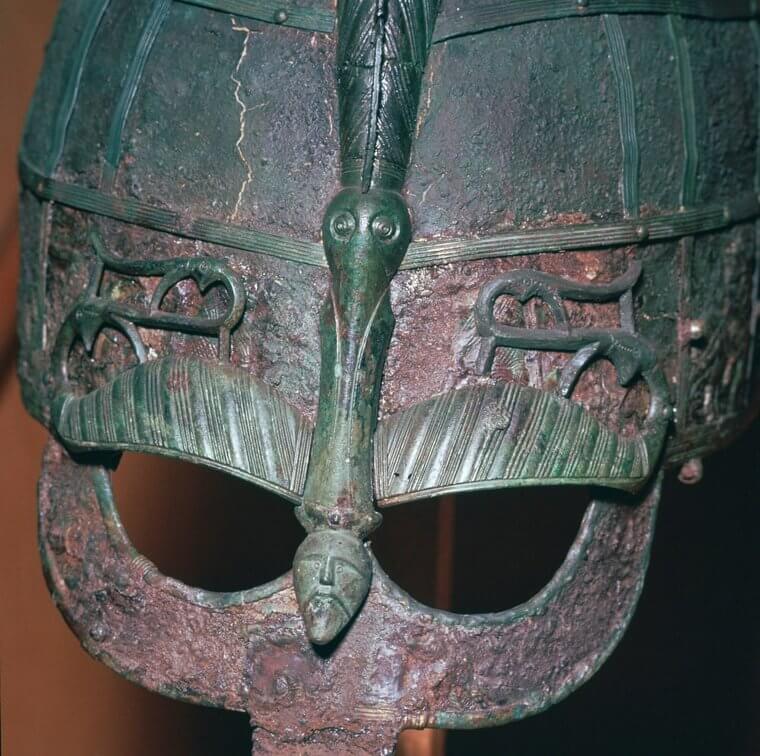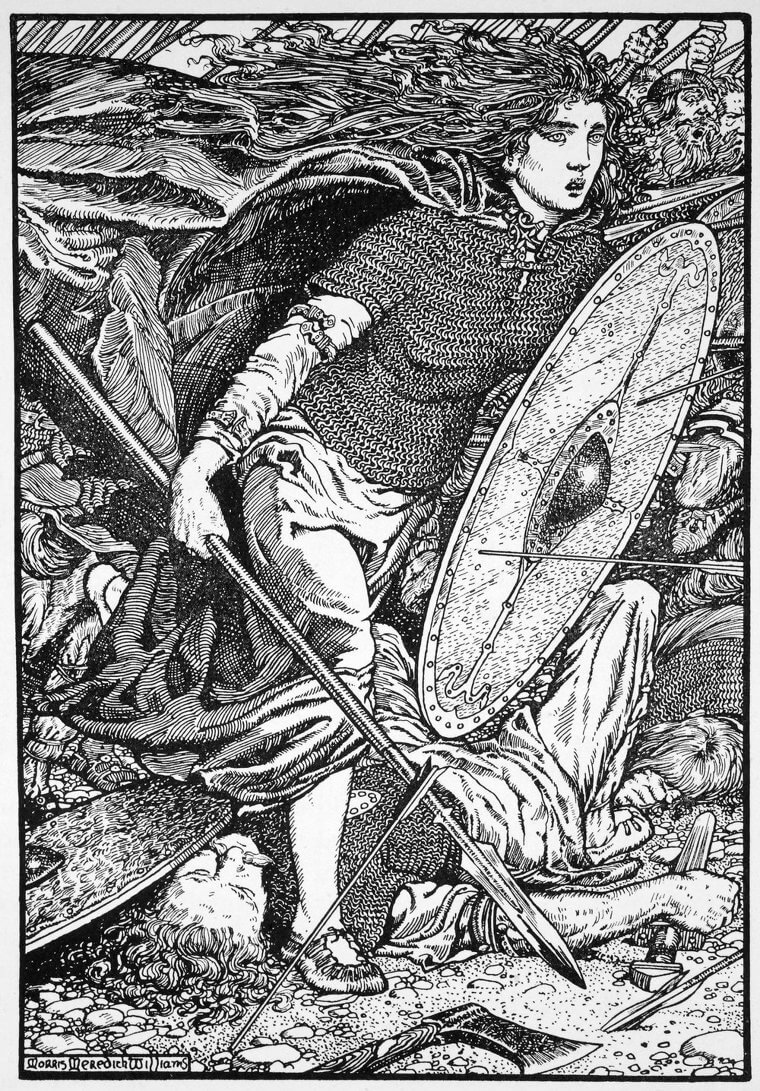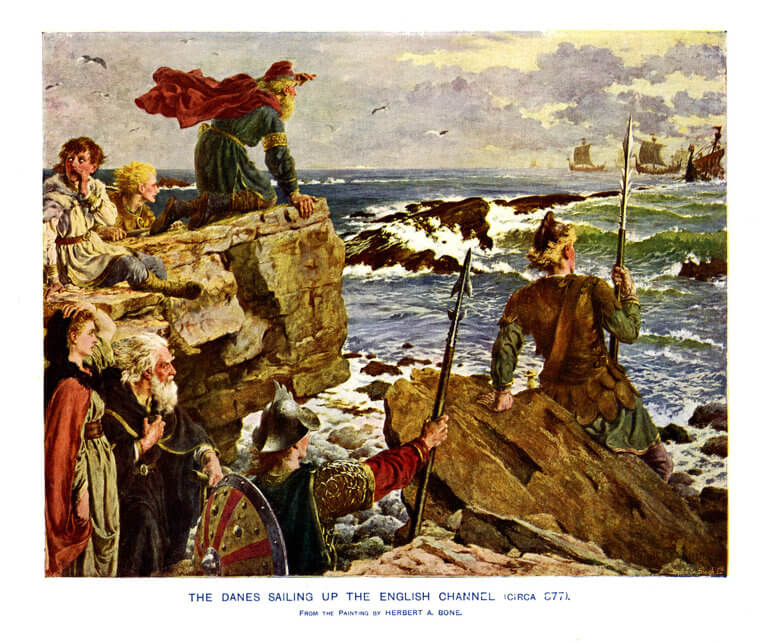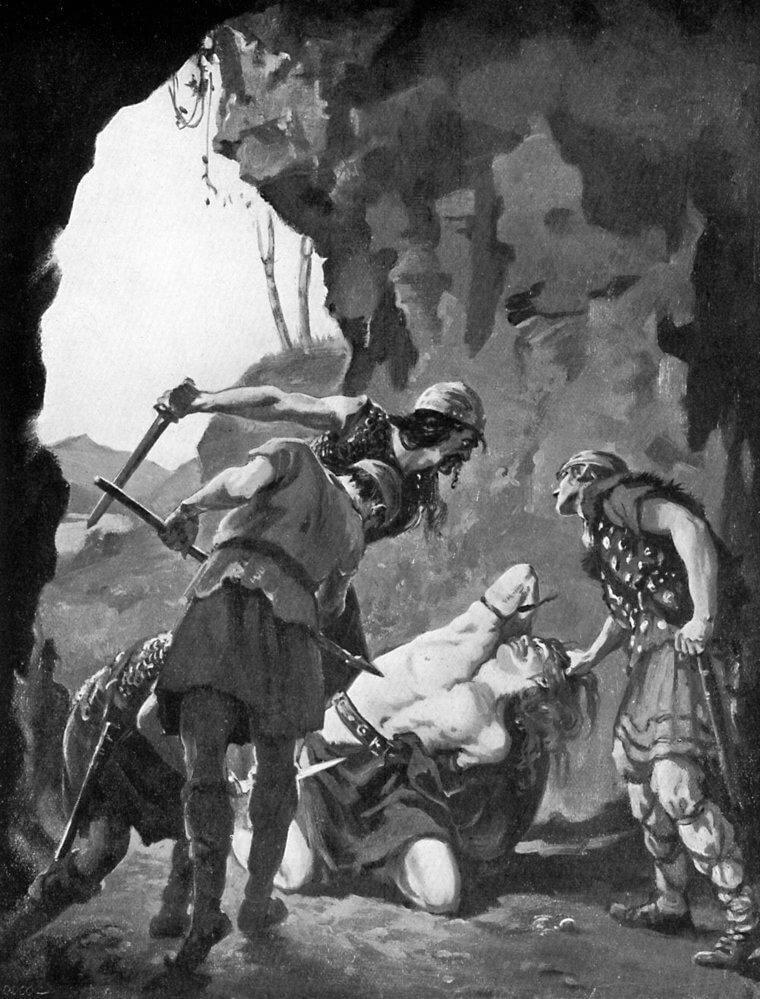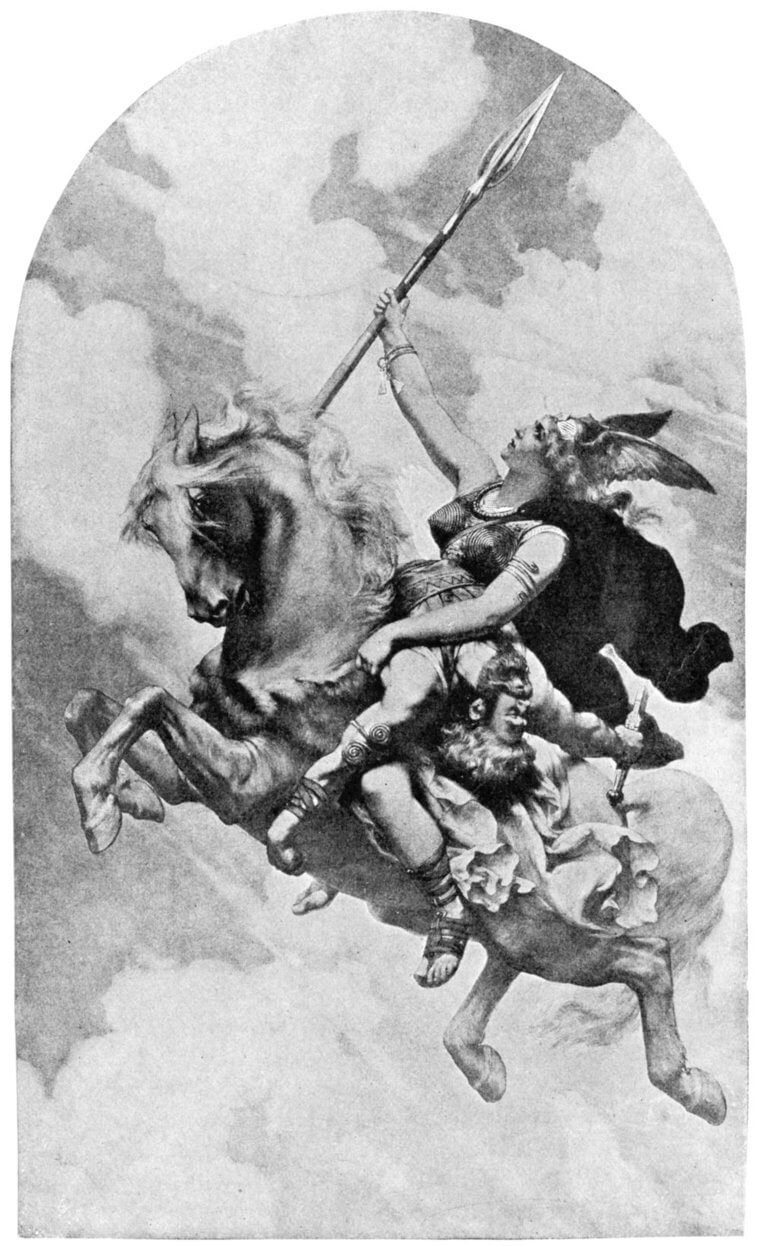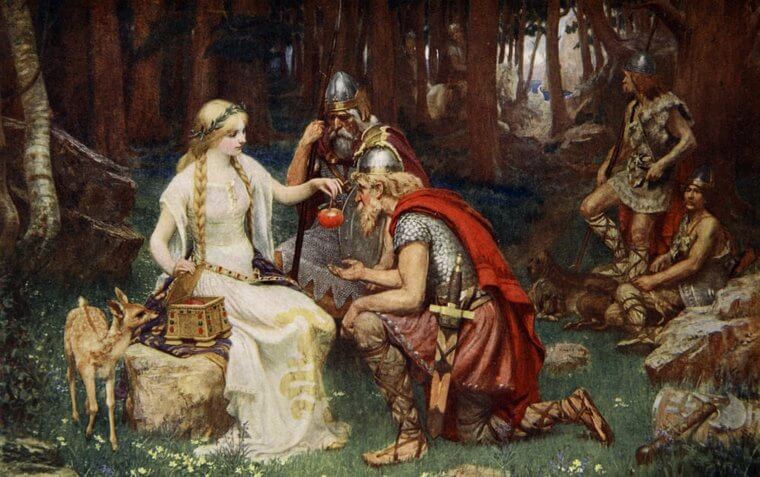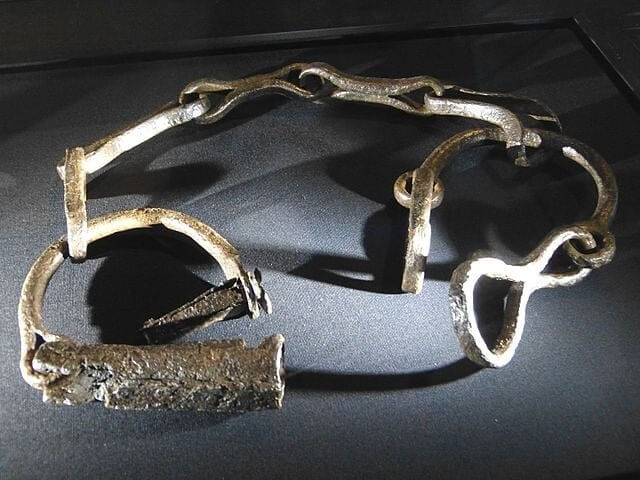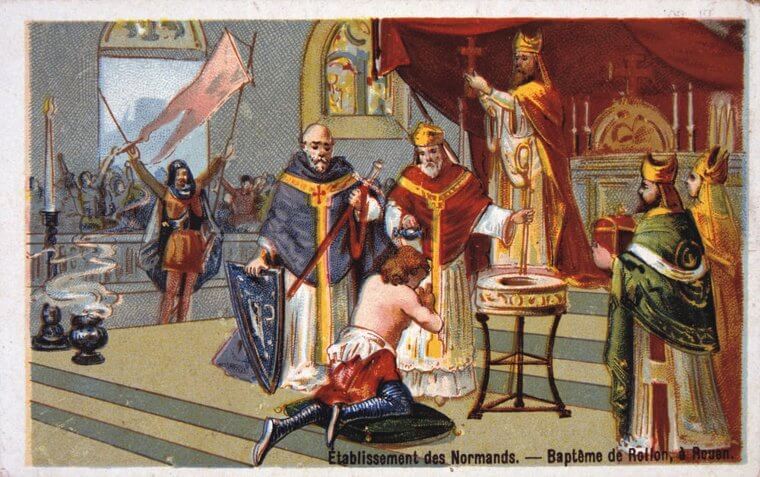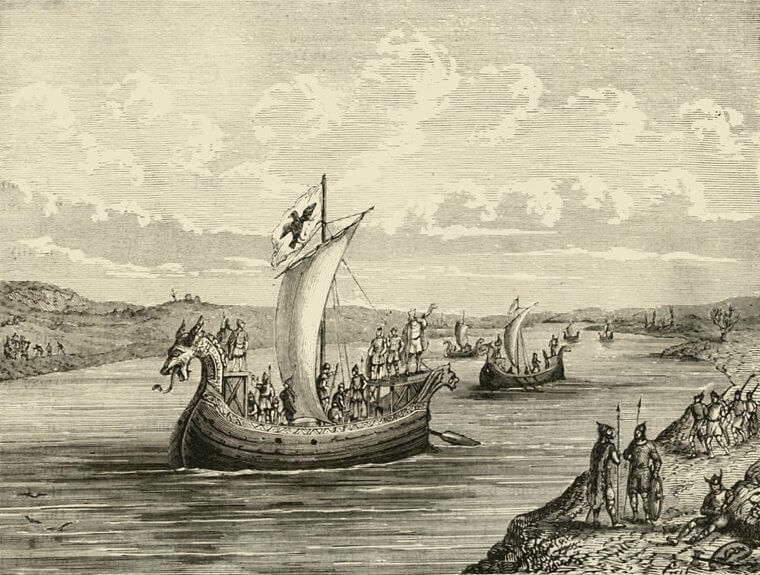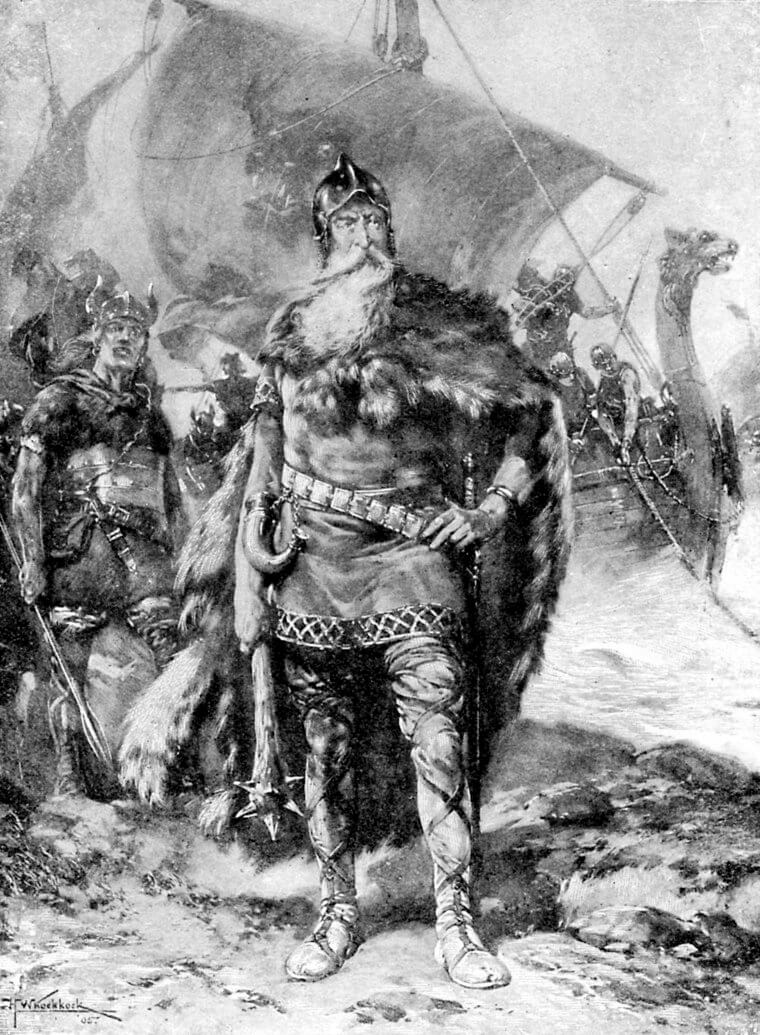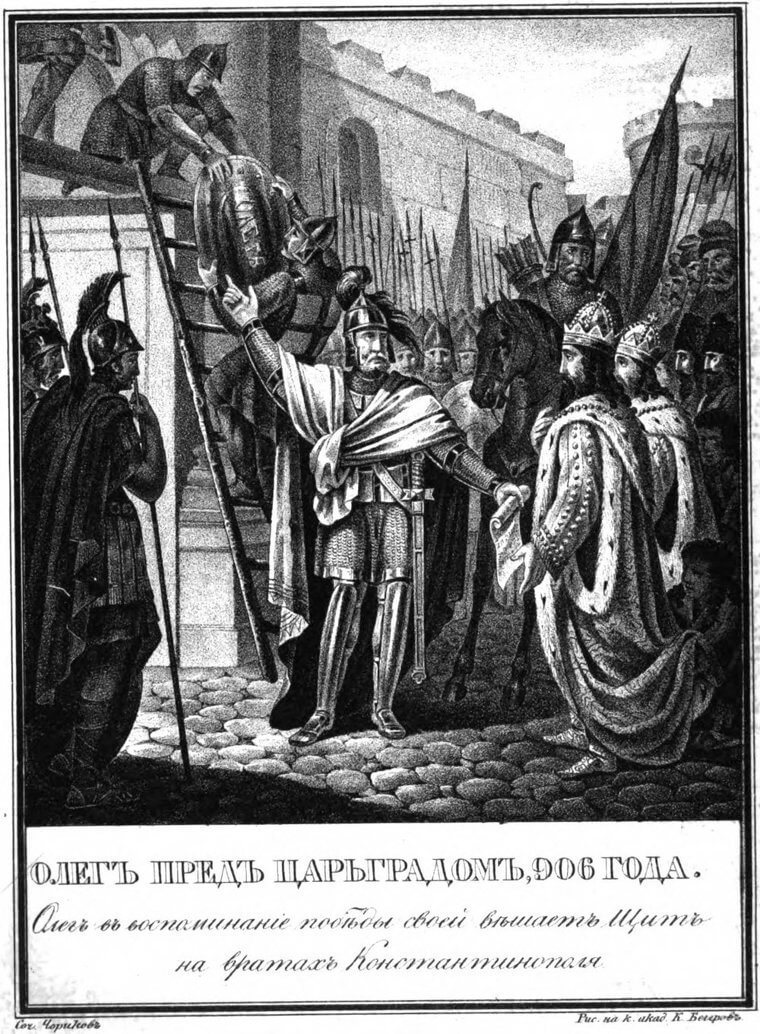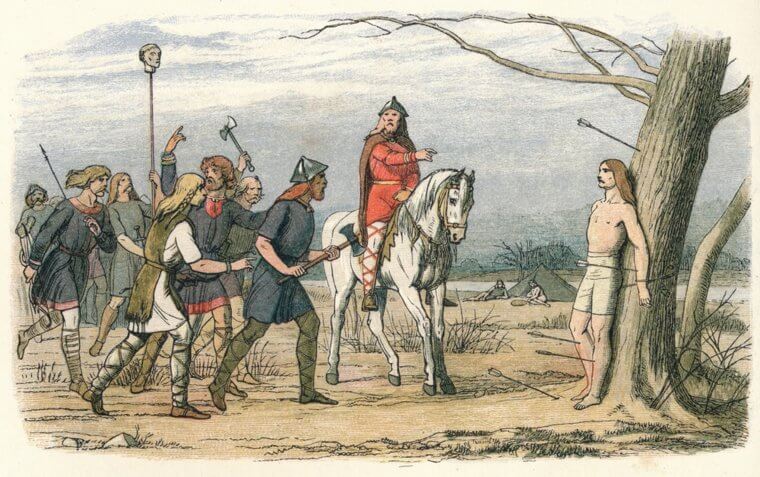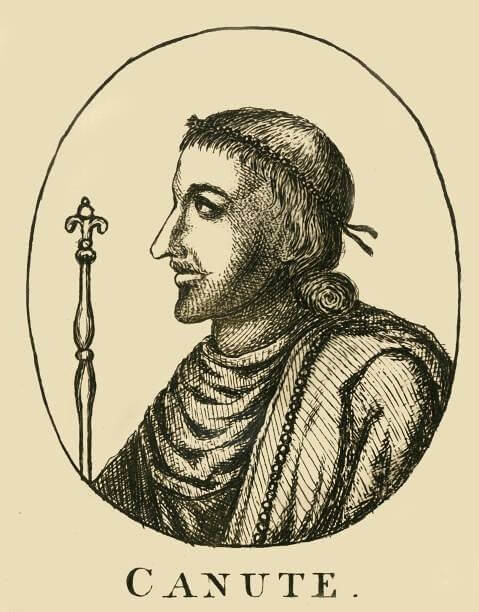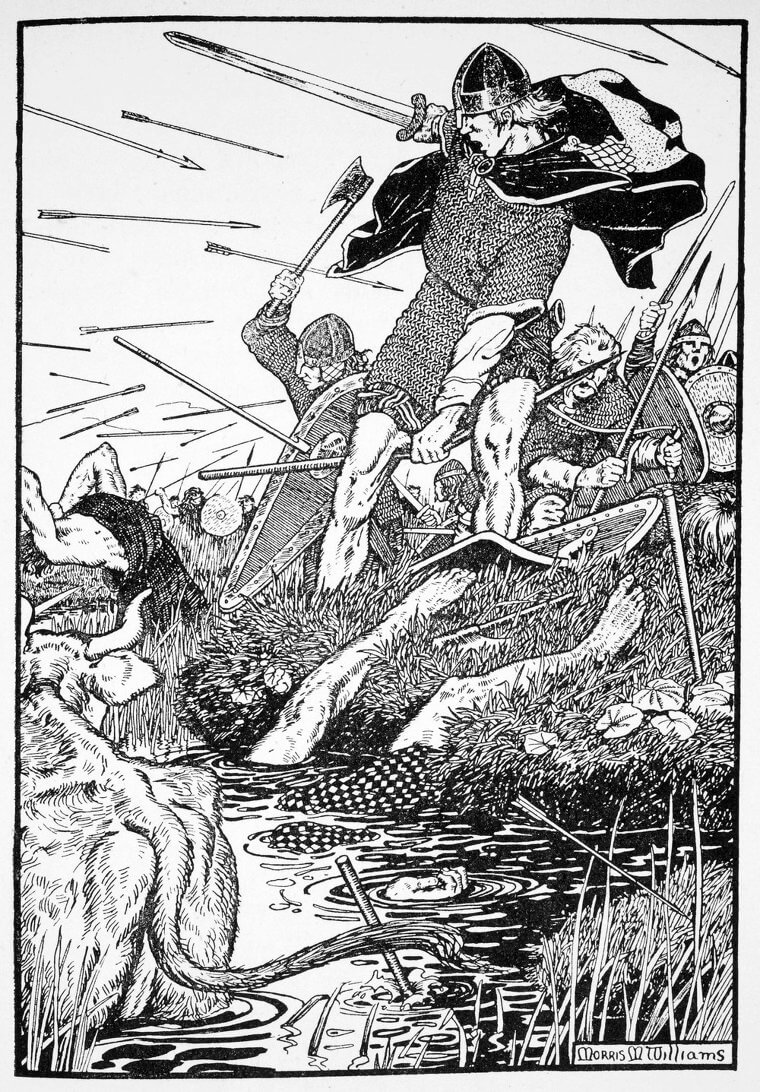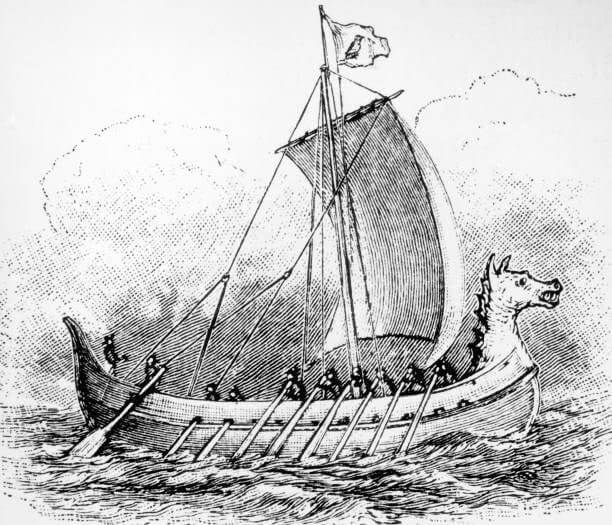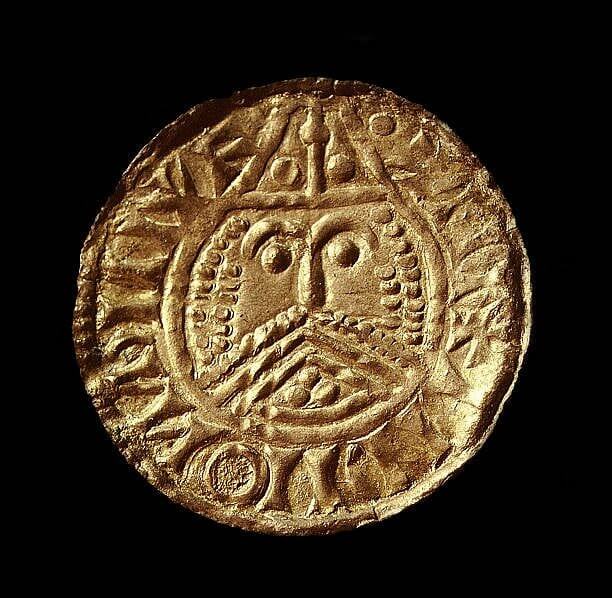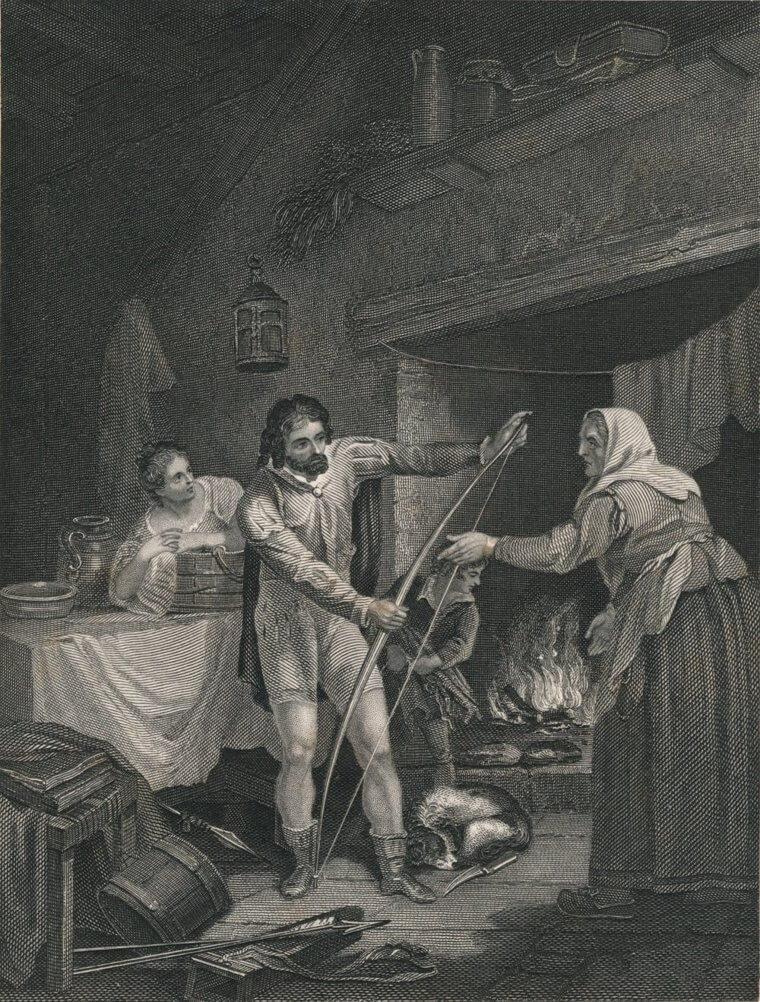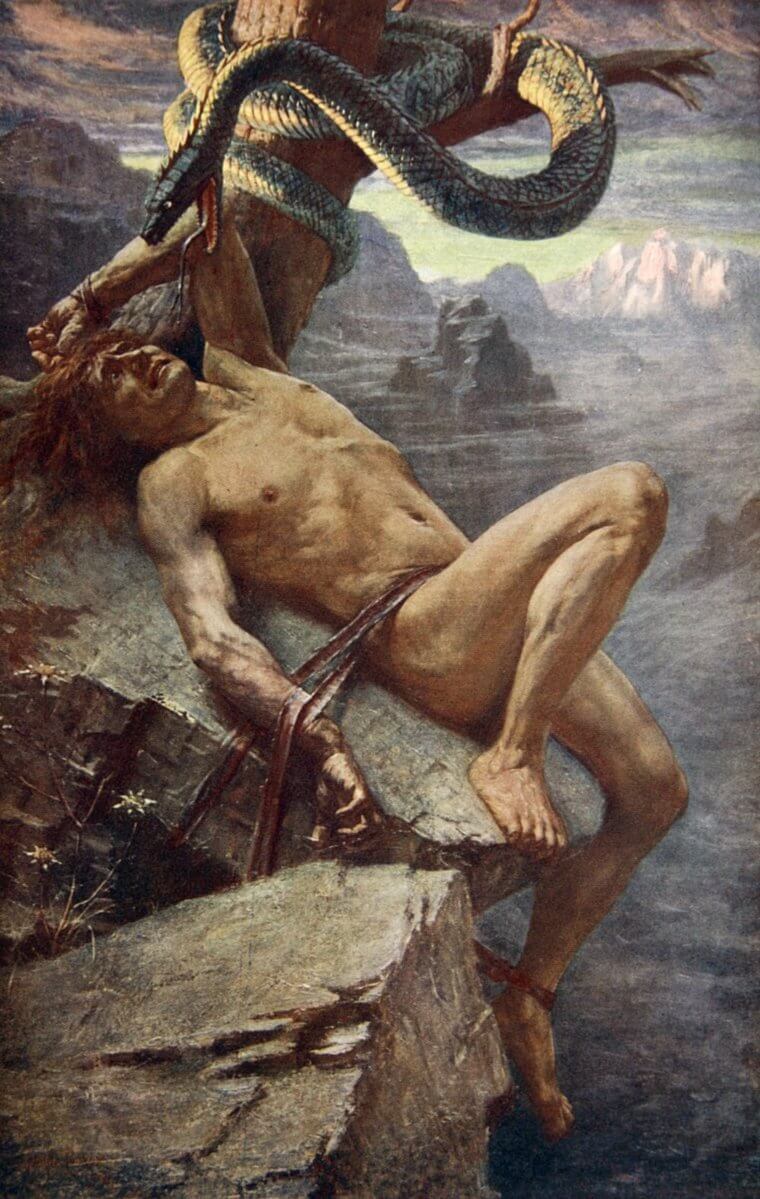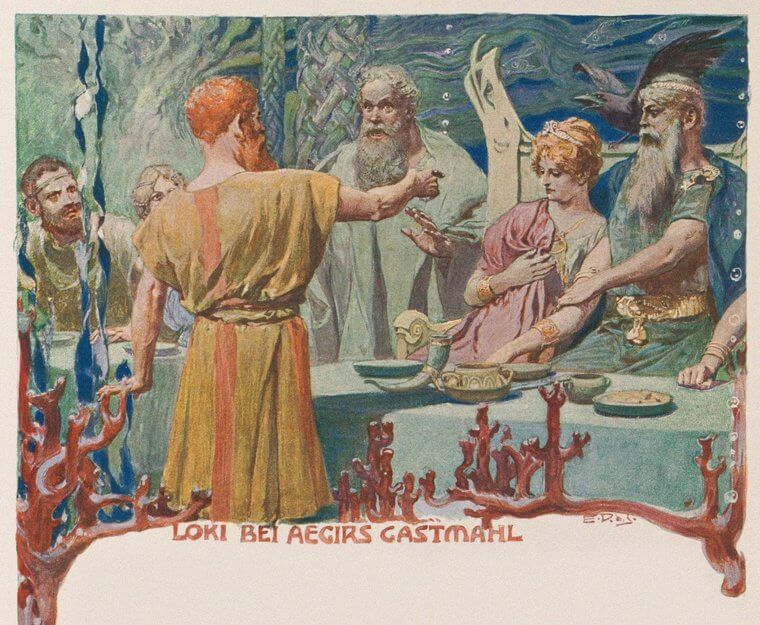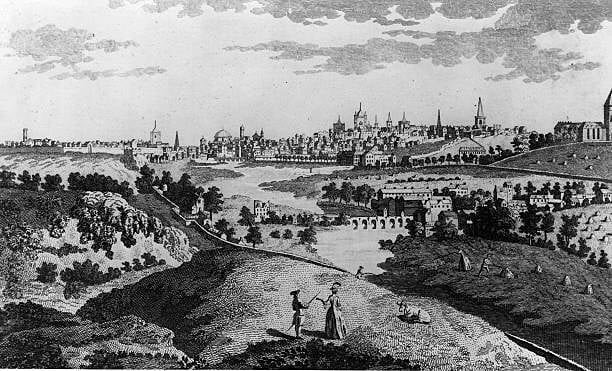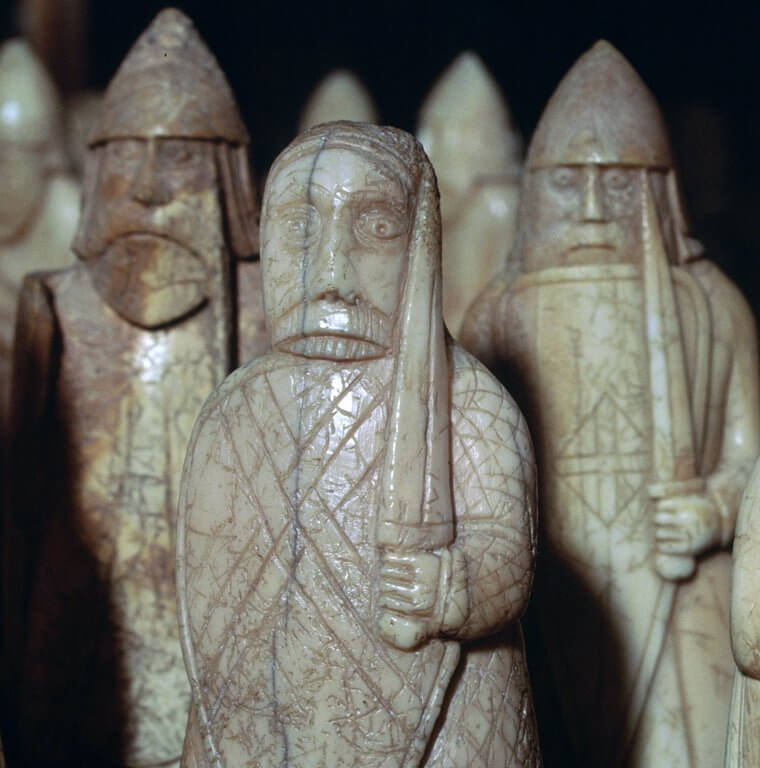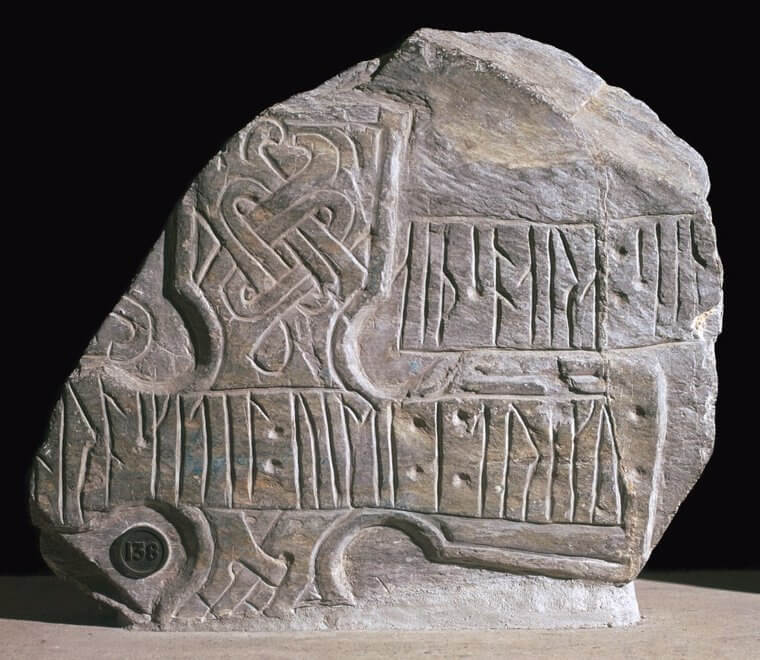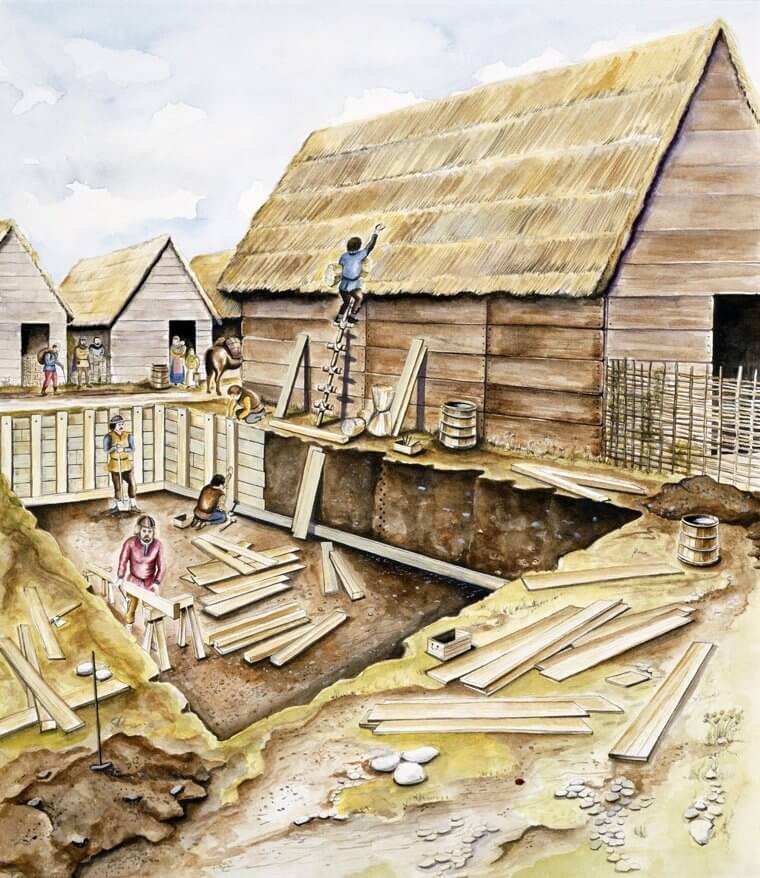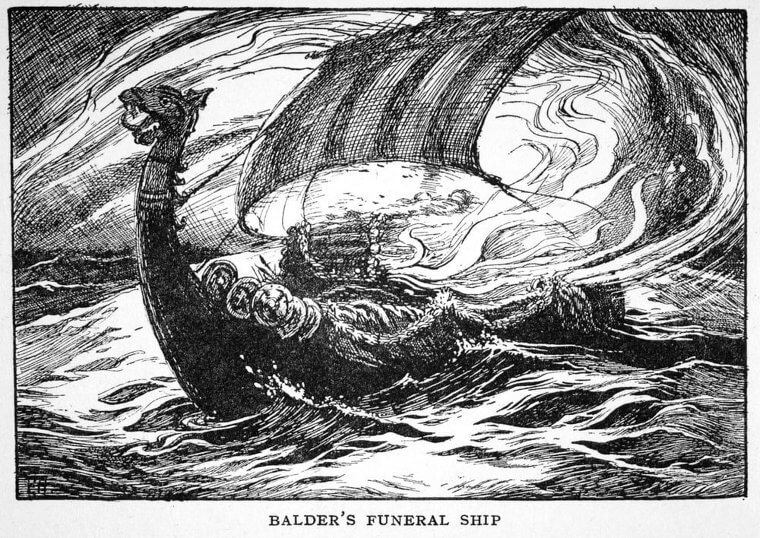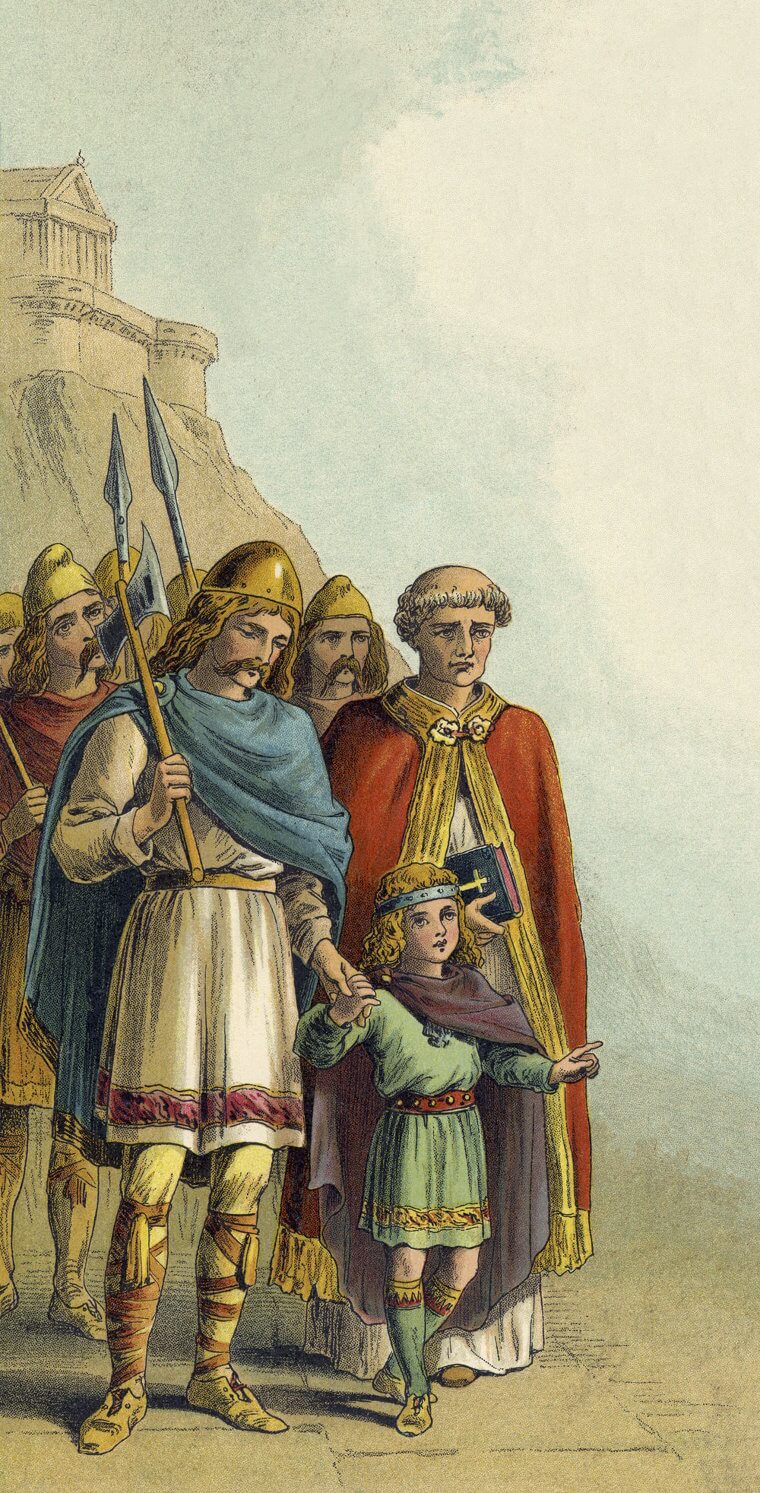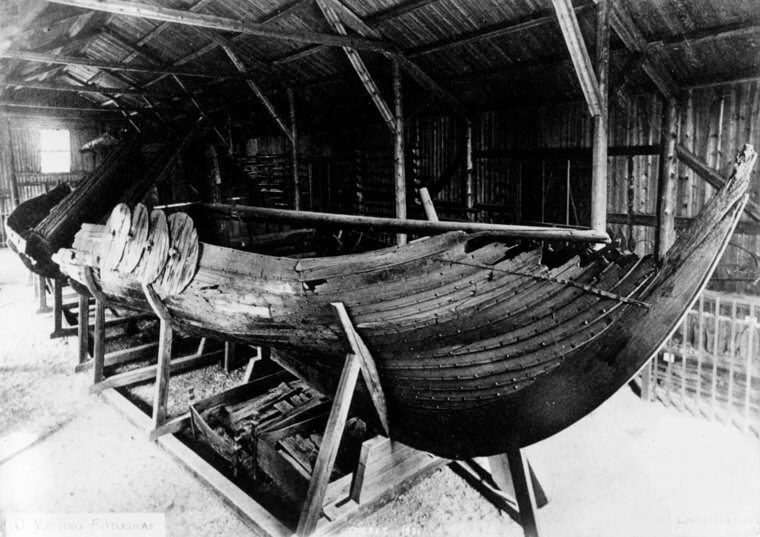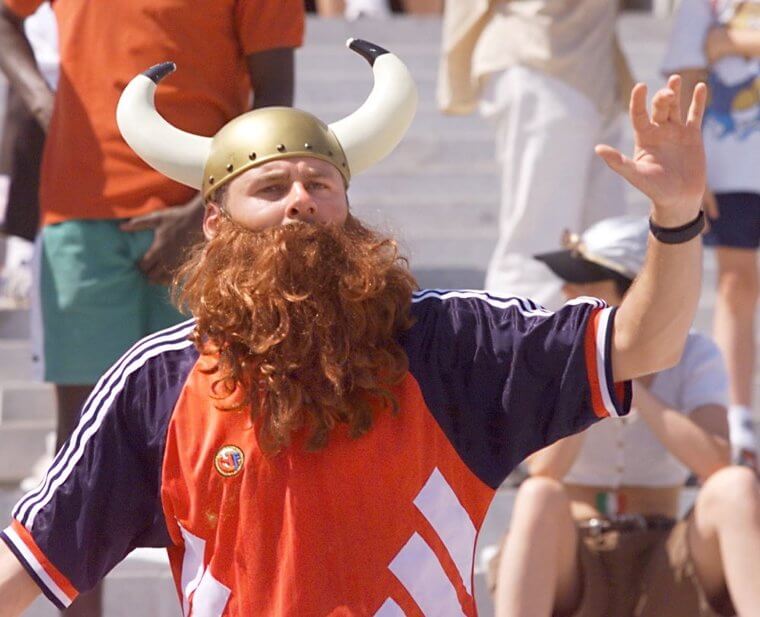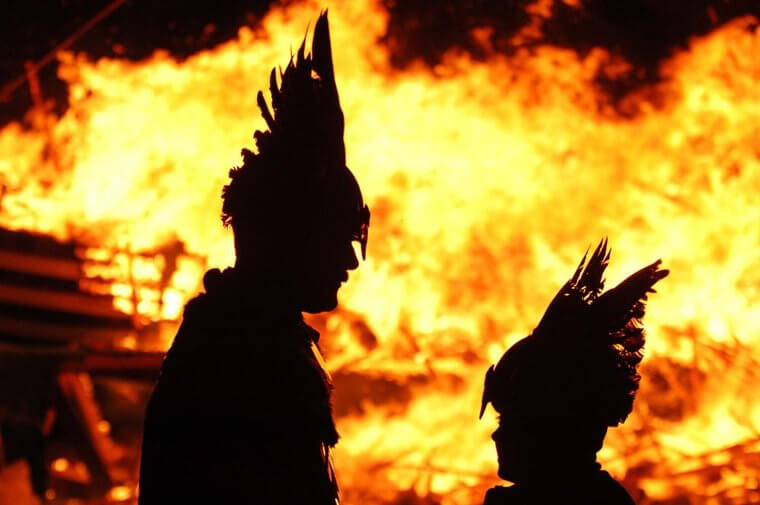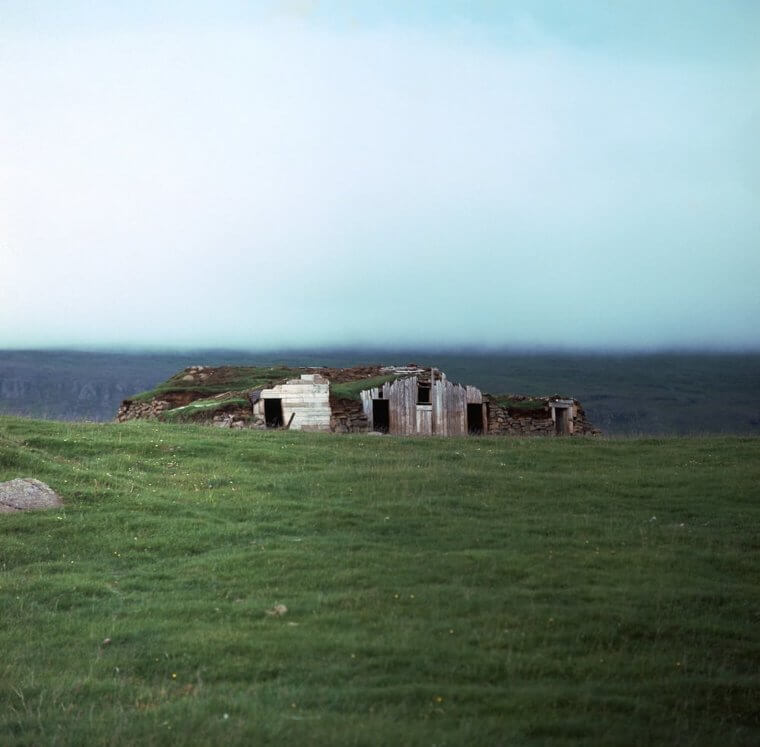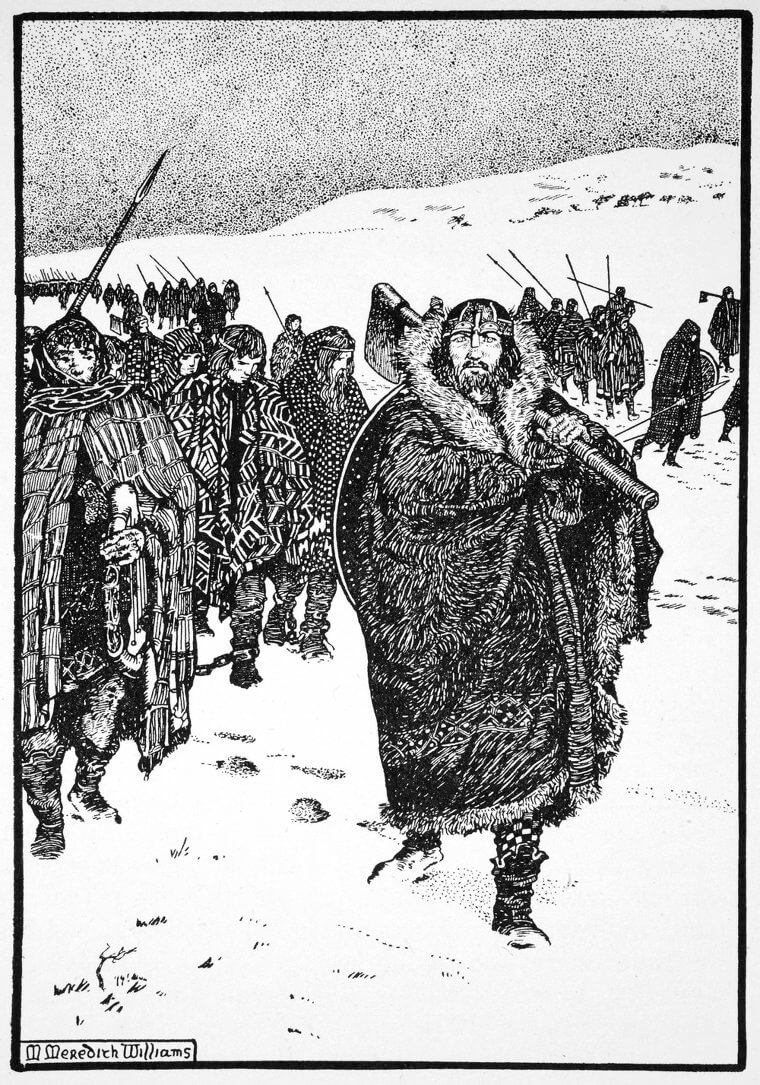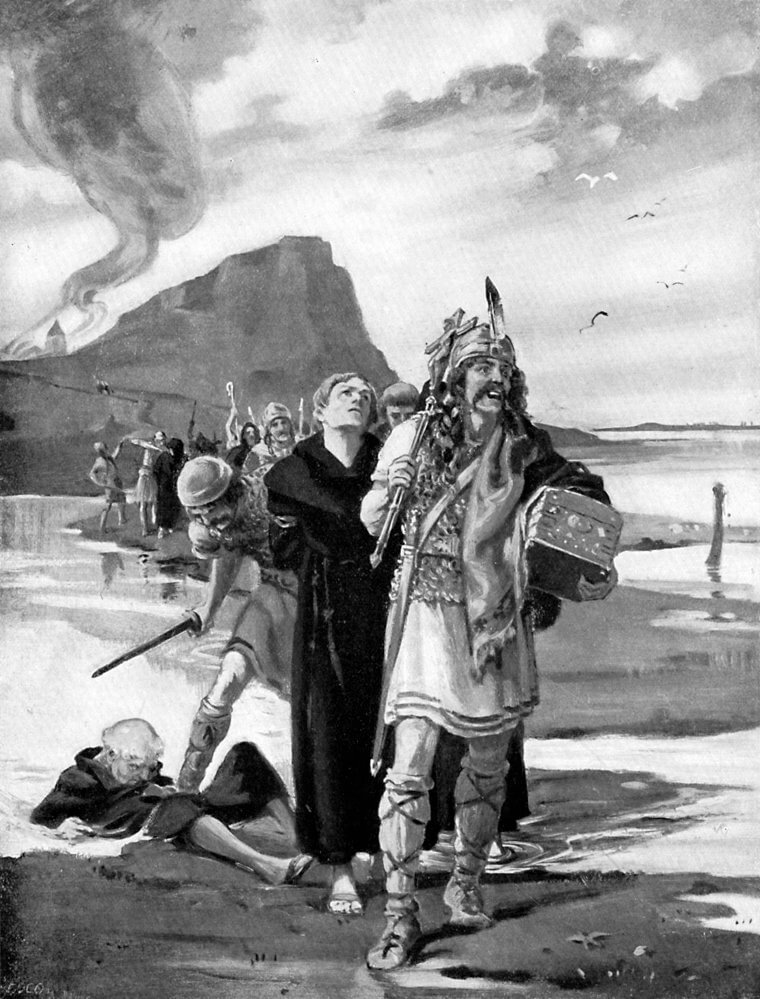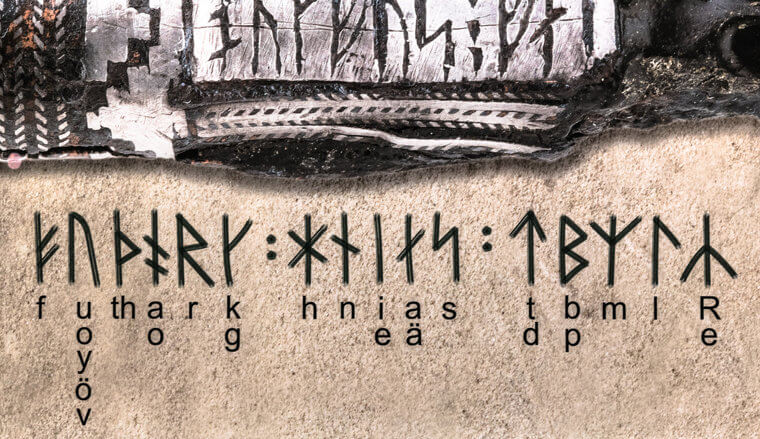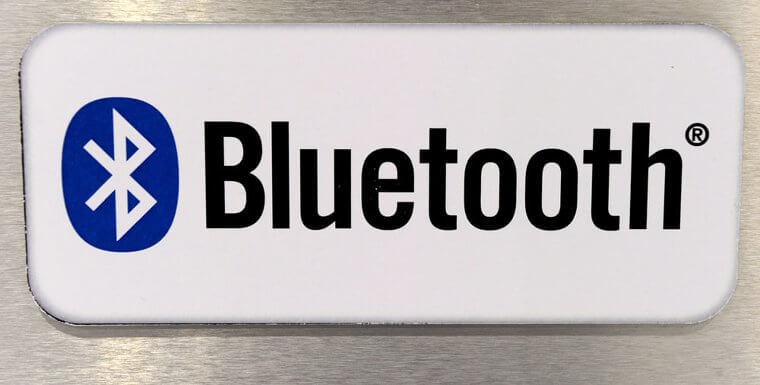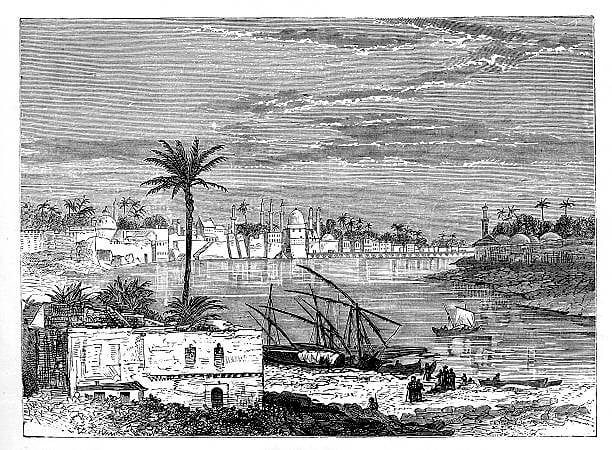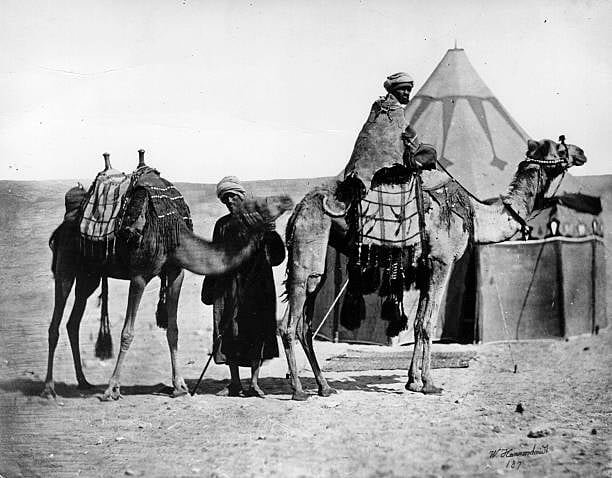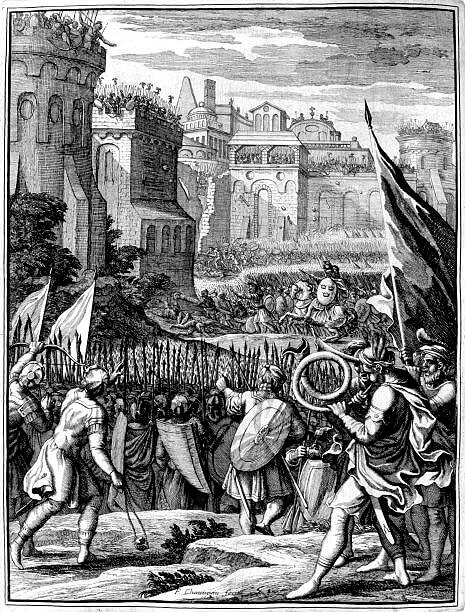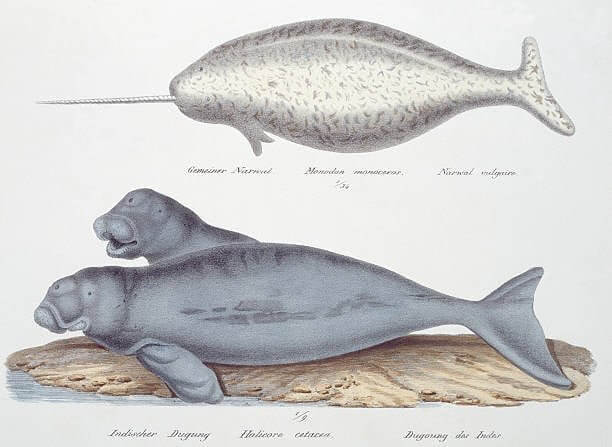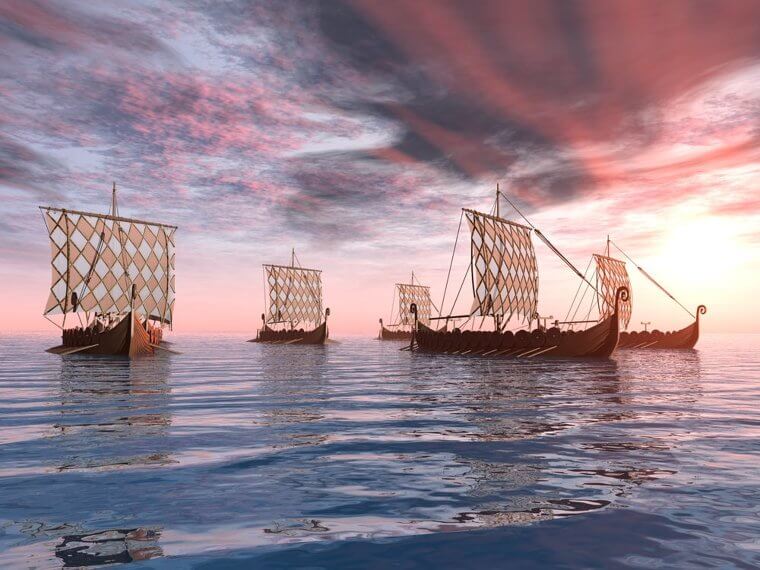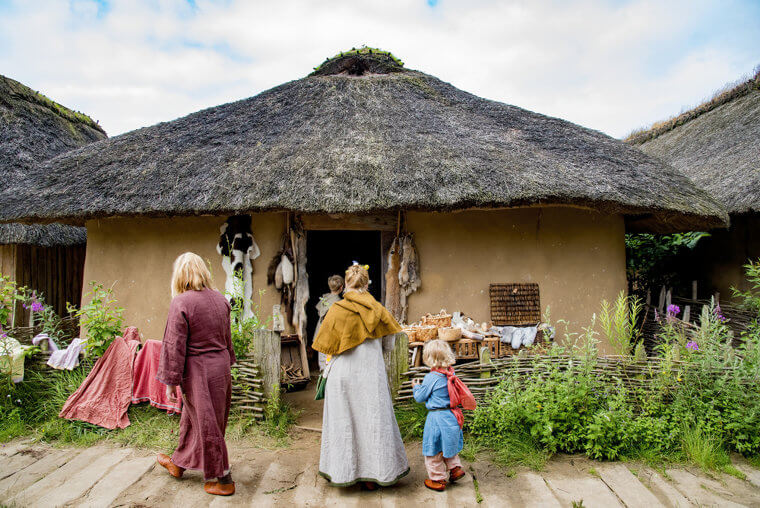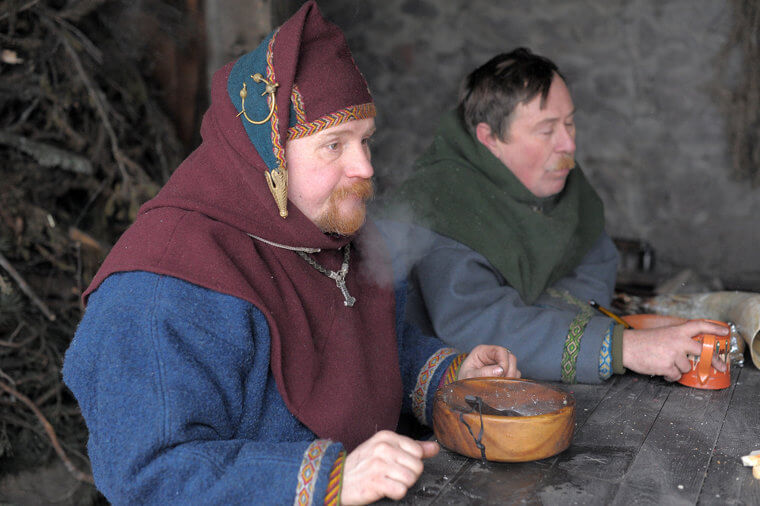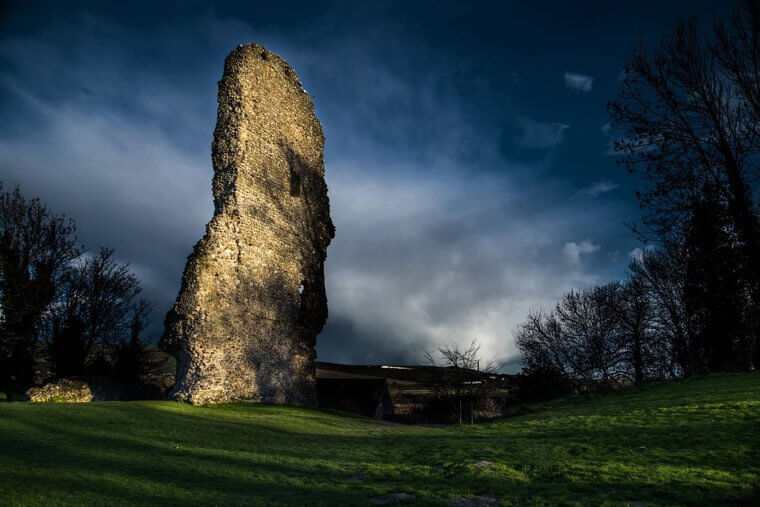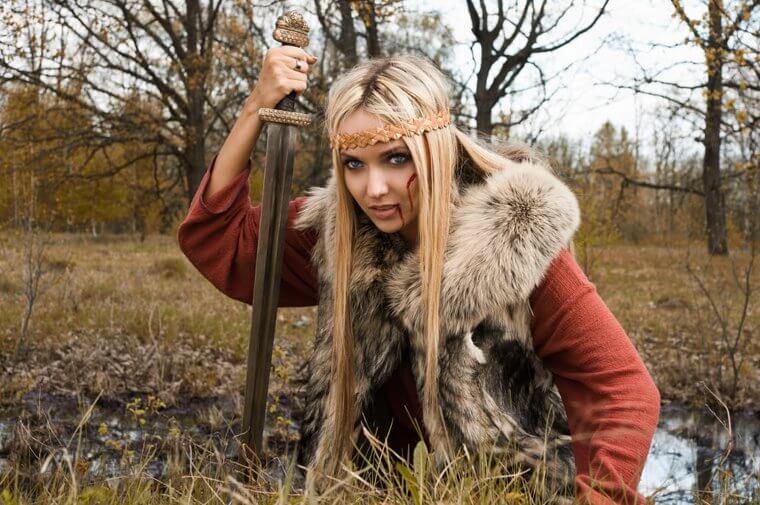The Viking age was one of the most prominent eras in our history. They were traveling Norsemen, pursuing large-scale raiding, colonizing, conquest, and trading throughout Europe until eventually reaching North America. Hundreds of movies and shows have depicted this dominant time, but the Vikings were so much more than their violent legacy sets them out to be. Here are facts you didn't know about Vikings.
The Rule of the Vikings
When we think of the Vikings, an image of a redheaded, bearded guy waving a battle hammer around probably pops into your head. Well, that is precisely what they looked like.
However, the men, women, and children who belonged to this Scandinavian race from 800 AD – 1066 AD had a profound effect on the world we now know. But what else do you know about the Vikings?
How Things Started
Even though the Viking Age is one of the most prolific eras in history, very few people know when and how it actually started. Luckily, we have prepared the answer for you. It all began on June 8, 793, when Viking warriors decided to get in their boats, travel from Norway, and descend upon the shores of Lindisfarne, Northern England.
Although the residents of this little island were ready to welcome their visitors pleasantly, the Vikings adopted a different approach. They completely destroyed the beloved Abbey of the locals, killed most of the people on the island, and claimed the land. This event actually encouraged hundreds of raids that occurred later on.
Doing Things Their Own Way
You might be wondering what made the Vikings unleash their wrath on a small island in Northern England. Well, so is the rest of the world. Although historians and researchers have tried to determine why these warriors would use such brutal force, a conclusion still has not been reached.
However, there are a few theories. Many people believe the Vikings were desperate to escape the poverty and famine in their home country. Many others believe the Vikings simply raided these isles because they wanted to. They certainly have done things their own way.
The Horned Helmets
Almost everyone has heard of Vikings and probably seen movies about them, including the one that was released in 2016 and called, believe it or not, Viking. Modern movies and TV shows usually depict these men as long-haired warriors who wear helmets with horns on the top whenever they go to battles. You must have seen someone wearing those bad boys during a fancy costume party.
However, there is no evidence that proves the real Vikings wore such helmets since they would have been detrimental in battle. They are more likely to have looked like the one in this picture, found in a grave in Sweden. We suspect the horns probably weren't so comfortable in battle, and these face-covering ones came more in handy.
How Did Viking Women Look Like?
Women from the Viking Age had similar facial structures to males, with austerity and firmness more commonly associated to masculine faces. The women, as well as the men, would keep their hair long. The most common depictions are ponytails drawn together by intricate knots of hair at the base.
Women and men had similar tastes in apparel. Instead of tunics and trousers, women wore simple dresses with shoulder straps made from the same dyed materials as men’s clothing. A love of the shiny, colorful, and beautiful was absolutely a part of the overall Viking culture, including jewelry.
What About Their Name?
The truth is that the men who paddled over to England for a spot of tea didn’t actually call themselves Vikings. This name has been associated with them for centuries. However, it did not appear in any of the history books until the middle of their reign during the 10th century.
It’s believed that the Norse origins of the word ‘Viking’ could stem from the feminine variation of an Old Norse word ‘vik,’ which actually means ‘small bay.’ Another interpretation would be that the name stems from a region in Norway called ‘Viken’ – the place where many of the Vikings actually lived. There you go; one mystery solved.
The Handsome Viking
Which actor is your first association when someone mentions Vikings? Is it Chris Hemsworth who portrays Thor in the Marvel Universe? Well, surprisingly, Marvel actually did manage to depict Vikings the way they looked like.
As a matter of fact, Vikings cared about appearance and their beauty standards were quite easy to follow. The majority of men sported long blonde locks, beards, and, of course, big muscles. Those who had brown hair were expected to dye their hair and beard with a special soap that contained a chemical called lye. This soap not only changed the color of their hair but also killed lice—A 2-in-1 deal!
Brutal Viking Punishments
Vikings are known for their harsh way of life, their brutal warrior tactics and their love for bloodshed. Even though much of this is true, it is believed that not all of these stories are true.
According to some stories, Vikings would punish criminals and felons by inflicting a punishment called The Blood Eagle upon them. This punishment involved opening up the back of a victim, and crack his ribs…one at a time. Supposedly, the Vikings would then pour salt into the victim and let nature take its course. However, there is no real evidence to suggest that they used this punishment. Thank goodness.
Ladies First
Throughout history, the position of a woman in a society had its leaps and bounds. Even though we live in the 21st century, women still have a long way to go. That is why you might find it hard to believe that women who lived in the Viking era were perhaps better off than women are now.
Living in a society dominated by big, burly men actually meant having as much as freedom a woman desires. Women were allowed to go on cross-country explorations in long-boats, to buy and manage their own land, and even to divorce their husbands. Despite being so masculine, the Vikings also had a soft spot for their ladies.
Keep It Clean
Thinking of Vikings may evoke images of drunken, bearded men pillaging families, taking over land, and raiding almost anything they come across. You’d think that getting totally wasted with mead and taking over the British Isles would leave no time for personal hygiene, but the Vikings made sure to keep themselves fresh and clean.
In fact, they took their hygiene even more seriously than some of us do today! Doing all that hard work probably required more than our two showers a week. It’s believed that Vikings even used items that resemble today’s makeshift razors, tweezers, hair combs, and Q-tips!
Vikings and Slaves
Although the Vikings liked bloodshed, taking over new territories, and executing whoever was in their path, they were actually a fair and generous society that lived ahead of its time. However, three were a few aspects of their lifestyle that were pretty backward – including their thriving slave trade.
Yes, you’ve read that right. The Vikings would often take men, women, and children from the European isles they conquered and sell them on as capital. The slaves weren’t sold randomly. Instead, the Scandinavians would take them to humongous slave markets throughout Europe and the Middle East.
Why the Viking Rule Ended
It’s no secret that the Vikings were incredibly successful during their reign. They were strong, powerful, and they had a tremendous impact on Europe. So why did their rule end?
Well, many people say that the Viking culture was eradicated because of religion. As the Catholic Church was becoming more prominent in Europe, some things became unacceptable such as burning someone’s house down. As time went by, the Vikings started adapted slowly to the rules and regulations of new Kings and ideals. The last Norse King, Harald III, took his final bow in 1066.
Medieval Global Warming
We’ve all heard what Leonardo DiCaprio and Al Gore think about Global Warming. We might be mislead to believe that increasing temperatures have affected our planet only for the last few decades. However, this isn’t entirely the case. From 950 to around 1250, the entire world was suffering from the so-called Medieval Warm period.
Of course, the Vikings made sure to take full advantage of this. Although it is fun to imagine these guys sunbathing on the grassy plains of Ireland and getting a tan, Global Warming actually allowed them to travel to new countries that would normally have been covered in ice and snow, such as Newfoundland.
Around the Globe
If you paid attention to history lessons at school, you probably remember that the Vikings were pretty keen on longboats. Their favorite activity was taking their boats, getting their oars out, and traveling across the seas to reach new lands.
Most people believe that Vikings only traveled across the British Isles and nearby European sites. However, they actually traveled much further afield. According to some evidence, researchers have discovered that Vikings actually traveled as far as North Africa, Israel, and even Baghdad.
Vikings Living in Russia
It is generally known that Vikings occupied the Nordic countries and the Scandinavians occupied England and France as well. However, Vikings also had a tremendeous impact on Russia and the Russian people.
To be more precise, they were the first settlers on the land that is today known as Russia. The Nordic settlers actually lived on the land for many years, until the Rus’ people arrived and transformed it into a Slavic community.
The Great Heathen Army
It’s no secret that the Vikings absolutely loved a good raid. Most of the time, they raided England, Ireland or Scotland and then they simply went home. Because what else can you do when you’re bored, right? However, there was a time when the Vikings took one step further and actually decided to settle in these Isles.
In 865, a whole army of Vikings known as the ‘Great Heathen Army’ sailed their longboats across the seas to the North of England and then they walked to the city of York. They overpowered the residents and lived on their land as farmers for 13 years, until they were overpowered themselves. What comes around goes around.
The Mighty King Cnut
Although the Vikings weren’t picky when it comes to their European conquests, they had a real soft spot for England. That is why England was hugely affected by the Vikings during their reign.
Eventually, after many Viking conquests, the Danish people and the English society signed a treaty that united parts of England through the Danelaw. Afterwards, King Cnut of Denmark created the North Sea Empire, and became the ruler of Denmark, Norway, and England. His rule lasted until 1066, when all those shenanigans happened.
Viking Land in France
Once the Vikings how much land could be conquered, they decided to stop discriminating other European countries and they added France to the mix. During their reign, the Vikings settled on the northern coast of France in a place they named the ‘Land of the Northmen.’ Nowadays, this region is known as Normandy. As the years went by, the Vikings in Normandy slowly changed their ways of life and became known as the Normans.
Of course, they didn’t want to give up their old lifestyle so they later went on to invade the likes of Belgium and other territories in France. Normans were even bold enough to take a trip over the English Channel so they could invade and conquer England in a bloody battle that entered the history books.
Making Iceland Their Home
Most of the time, the Vikings had a pretty clear picture of where they wanted to go and how they wanted to invade that place. These guys might be depicted as savages, but in reality, the were the masters of map-reading and making to-do lists. But, just like the rest of us, the Vikings also made mistakes.
However, their mistakes didn’t have consequences. Instead, making a mistake enabled the Vikings to find Iceland! They discovered the island of Iceland in 830 when a few men took a wrong turn on their way to the Faroe Islands. Then, they went home to get more men, took them to Iceland, and eventually settled in the country.
The Vikings Discovered America
Majority of people thinks that Christopher Columbus was the man who discovered North America. However, some researchers wouldn’t agree. According to some evidence, it appears that the Vikings had set foot on the North American continent four decades before Columbus even set sail for the Free World.
It’s believed that around four decades before Columbus set sail for the Free World, the Vikings had already come and gone. Apparently, these bearded warriors also had a knack for exploring, and they managed to make their way through Newfoundland and other areas of America and Canada. They even lived on the continent for a few years once they realized that the Native Americans were no match for their weapons.
Story of the Maine Penny
It’s hard to imagine Vikings getting on well with other people. Let’s be honest, they were massive and eager to conquer new territories. However, some evidence points out that there was a time where the Vikings, the Native Americans, and the Inuits engaged in trade and communication in North America and Iceland.
The evidence is linked to the Maine Penny, a silver coin that was used Norway in the 1000s. However, when this coin was discovered, it was found in Maine. Although this evidence suggests that there were some friendly relations between these groups, all trade communications were lost when they started getting on each others’ nerves.
The Viking Social Classes
Even though we might not want to admit it, in our society people are divided by class. There is the working-class, the middle-class, and the upper-class. Although this class system may seem like a relatively recent addition to the world, the Vikings also had their own class systems back as early as the 9th Century.
At the top of the Viking social pyramid were the Jarls (the priests, the nobles, and the wealthy merchants). Then, there were the Karls (the farmers, builders, and average people). The lowest social class was the slaves.
Norse Mythology
One of the things that comes into your mind when someone mentions Vikings is Norse mythology. Even though the Viking era ended long time ago, the Norse culture is still popular even nowadays – especially if you’re a fan of Chris Hemsworth.
The Viking is known for its remarkable heroes, goddesses, and gods. The legends of Thor, Loki, Odin, Freyja and more appeared with the Norse Germanic tribes and later made their way into the folklore tales. These incredible stories have since been transformed into popular culture, and it seems we can’t get enough of them!
Vikings Loved Delicious Food
If you’ve ever been to Scandinavia, you’ll know that their cuisine is a little different than the typical burger and fries meal. Moreover, you’ll be lucky if you can find a McDonald’s milkshake anywhere.
Vikings needed as much energy as they could muster, which meant that they would eat meals that were delicious but also rich in nutritients. The typical Viking delicacies included lots of meat, bread, seafood, fresh fruits and vegetables. They also had interesting techniques for preserving food. For example, they would hang their fish and let it dry for months just to get the perfect taste.
Major Discoveries of the Vikings
If you’re fond of traveling you might have had the opportunity to visiting Europe. If you haven’t, then you probably have made a list of European cities you would like to explore one day.
But, what most people are not aware of is that these major European cities wouldn’t even exist if it wasn’t for the bearded, strong and slightly mad Vikings. During the course of their travels, the Vikings discovered today’s Cork, Reykjavik, Dublin, Limerick and expanded them into the major cities they are today.
The Berserkers
One popular Norse legend is that of warriors who transform into animals during battles. In fact, J.K Rowling based her notorious character, Fenrir Greyback, on one of these stories from Norse mythology. One common name for such warriors is ‘The Berserkers’.
Although, it is highly unlikely that these warriors changed into werewolves or any other animals, there is some truth in the origin of their name. In Norwegian, ‘Berserkers’ literally means ‘to change form’ and is derived from the name of Viking warriors who would don their animal skins and do away with their enemies in battle.
Viking Alphabet: The Runes
Although we know quite a bit about the Viking era, there is little information about the written inscriptions or bodies of work since there are very few of them! Instead, researchers have pieced together artifacts and various other items so they could piece together the history.
Nevertheless, the Vikings did leave a little bit of their culture behind in written form, including the Runic Alphabet. Although the Runic Alphabet is not in use for quite some time, it has proven vital in learning even more about the incredible reign of Vikings in Europe.
Vikings Were Eco-Friendly
Nowadays, we are doing everything that is in our power so that we could save our planet. We use solar panels, wind turbines, and even electric vehicles. We’ve made quite a progress, right?
However, it seems this eco-friendly attitude we have nowadays is nothing new. The Vikings were all about preserving the planet long before us. The Viking families would live in specially designed longhouses that were had turf roofs as a decoration. The grass was not used only to keep the heat but also to keep the ecosystem alive.
The Viking Burial
By now you should have realized that the Vikings were very impressive human beings. But, even though we might feel a bit inferior when compared to them, not even Vikings could find a way to cheat death. Whether they died in battle or of old age, Vikings treated every death with utmost respect and grace.
That is why they didn’t only bury their loved ones. Instead, they had special funerals. The dead were placed inside a specially-made burial ship with all of his/her belongings - clothes, riches, jewelry, and even animals. Then, the ship would be set alight or covered with a pile of soil and pushed out to sea. The perfect way to say goodbye.
Leaving the Weak Ones Behind
During their reign, the Vikings proved that they were one of the strongest warriors in history – and they took their role very seriously. As soon as a child was born, they were inspected for strength, health, and potential.
The aim of the Viking culture was to raise strong warriors who could improve their power as well as livelihood. If a child did not fit their bill, they would simply leave it behind either by abandon the child or, in some extreme cases, throwing it into the sea. In addition, they would also leave the stragglers behind, and move ahead with those who had proven themselves worthy.
The Seafaring Raiders
Did you know that the Vikings helmed from Scandinavia? These brave men and women were born and raised on the shores of Sweden, Norway, and Denmark in the 800s. However, they weren’t technically Vikings.
These people actually stayed in their homeland. The “real” Vikings actually hopped in their boats so they could travel to other regions in Europe, primarily the British Isles. That is why they got the name “Seafaring Raiders.”
The True Reason Behind the Horns
There is a popular belief that the Vikings owned and wore helmets that had horns on the sides. As a matter of fact, this trope is so widespread that the Minnesota Vikings football helmet even has “horns.”
However, this belief is wrong and it is a result of a mistake made by the archaeologists who first discovered Viking treasure troves. The horns are actually drinking horns which were placed alongside the helmet after a Viking’s death.
Using Science to Start a Fire
One of the reasons why the Vikings were able to travel for so long and reach distant places was because they were able to bring fire with them. But how?
Well, they would take touchwood fungus and boil it in human liquid excrement for several days. Since the excrement is full of nitrates, it burns at a very slow rate and enables the fungus to smolder instead of burn. This process enabled the Vikings to carry around the firestarter start a campfire whenever they needed to.
Vikings Were Actually Farmers
Well, the Vikings were raiders and they loved discovering new territories that could be conquered. However, this wasn’t the only thing they did.
Believe it or not, Vikings were primarily farmers and they focused on growing wheat, barley, and various otjher oats. They also grew livestock, from pigs and cattle to goats and sheep.
Vikings Loved Ski Vacations
Wait, isn’t skiing a modern sport? And, when someone mentions a ski vacation, the first thing that crosses your mind is an exotic resort in the mountains, brand down jackets, and drinking hot chocolate. However, it turns out that the Vikings were masters of the slopes during their reign.
Ancient skis were found in Scandinavia and they were estimated to be 6,000 years old. There’s solid evidence which suggests that the Vikings used to ski to get from place to place. And, they also did it just for fun! They even believed in a god of skiing named Ullr.
What About Unity?
Usually, we speak about the Vikings as if they were a single, monolithic ethnic group which was controlled by one king sitting somewhere in Sweden or Norway. However, the Vikings were quite varied and they had multiple tribes and kingdoms.
There were groups everywhere in Scandinavia, and each group had its own chieftain, kings, and even traditions. The term Vikings, which loosely translated means “raiders,” was just a slang term.
Language of the Vikings
The Vikings primarily spoke a form of Old Norse, a language which was the basis for the creation of the modern day Swedish, Danish, Norwegian, and Icelandic languages.
As a matter of fact, the Icelandic language is the closest language to Old Norse. However, Old Norse language still exists! Residents of one town in Sweden spoke the actual Old Norse language and used runes as their alphabet up until the 1950s! The Viking culture managed to survive for so long in the town of Alvdalen since it was cut off from the outside world until a few decades ago.
Vikings and Bluetooth
Bluetooth has its origins in Viking mythology. Well, not the Bluetooth technology but rather the term. Jim Kardach, the man who invented Bluetooth, read one book about the Vikings and he was impressed by Harald Bluetooth, the Viking king of Denmark.
Harald is known for his incredible achievements. He actually managed to unite all of the Viking tribes around him. Since Kardach considered Bluetooth a uniting technology, he decided to name it after King Harald. Furthermore, the Bluetooth symbol is a combination of the runes that stand for letters H and B, the initials of King Harald.
The Vikings Visited Baghdad
Vikings travelled quite a lot. They went all over Northern Europe, conquering territories that are today the United Kingdom, northern Germany, and France. But, it turns out that the Vikings made it all the way to Baghdad, a city located in Iraq!
The Vikings were ambitious traders and they established trade connections with the Arab peoples living in the Middle East. Perhaps the reason behind their successful trade is that they often enforced business contracts by brute violence.
Serkland
The Vikings actually came up with their own name for the region where the Arabs and Persian people lived. Archeologists even discovered runes which commemorate those who fell in battles that took place across the Middle East and Central Asia.
The Vikings named this vast region Serkland. In Old Norse, the word Serk means “gowns,” which is actually a comment on the style of clothing worn by the locals. So, roughly translated the Viking word for Middle East means “the land of the men who wear gowns.”
Vikings Attack Paris
Back in 832, the Vikings set their sights on a big, walled city in Europe. They believed that vast treasures must lie behind the walls of this city. That is why Ragnar Lodbrok decided to lead a Viking fleet of 120 ships containing thousands of men up the Seine River to Paris.
The Vikings looted the city and took everything they could find. Unable to stand up to the Vikings, the head of the city, Charles the Bald, paid them over 5,600 pounds of gold and silver to leave.
Unicorn Hucksters
Up in the northern part of the Arctic Ocean lives a species of whale called Narwhal. The Narwhals are smallish whales, but they are recognizable thanks to a very unique feature which is in their mouths – a giant, spiral tusk.
The Vikings used to hunt these whales for their meat and oil. In addition, they used their tusks as decorations. However, they soon figured out another way to trick European mainlanders to pay them huge amounts of money. They simply made them believe that the tusks were actually unicorn horns!
Conquering Iberia
The Vikings were always looking for new adventures and conquests. That is why they eventually sailed through the Straits of Gibraltar and travelled to the Iberian Peninsula. Once they reached the land, they simply did what they were good at; they wreaked havoc on the Muslim rulers who reigned there.
They looted the Iberian Peninsula and captured cities such as Lisbon, Cadiz, Seville, Santiago de Compostela, the Balearic Islands. They even captured the King of Navarre, García Íñiguez, and held him hostage. In the end, the Vikings were eventually banished by the Muslim Moors.
Vikings and Trade
The primary goal of the Vikings was not to spread their religion or ideology, but to become wealthy. That is why they engaged in trade often and eventually became fierce traders. They were willing to trade anything with anybody, even if they had just finished fighting them.
One of the very interesting trading relationships they established was with the Muslim rulers in Andalusia and in today’s Morocco in North Africa. Both the Vikings and the peoples they traded with were commited. In fact, one Jewish-Moorish trader named Abraham ben Jacob al-Tartushi even voyaged up to the Danish capital to secure trade routes!
The Beginnings of Russia
Russia is nowadays perceived as one monolithic culture which has existed since forever. However, the entire existence of Russia was started by the Vikings. Even though there were Slavic and Turkic tribes present in the area, it was the Vikings who conquered what is today known as western Russia, Belarus, and Ukraine.
These Vikings were called the Rus (Old Norse for “men who row”) and they descended from the area of Roslagen in Sweden.
The Viking Sun Stone
Many people wonder how could Vikings be more advanced than their contemporaries and how could they travel more efficiently. Well, they owe most of their success to a tool called the sun stone.
This stone, usually a crystal with refractive properties, was used for determining the position of the sun even when the skies were cloudy or right after the sunset. Many researchers first believed that the sun stone was just another Viking myth. However, they managed to replicate the effects of a sun stone eventually by using Icelandic Spar.
Blonde Hair
Every person has their preferences. Some people prefer brunettes, others find redheads attractive, and it's said that gentlemen prefer blondes. However, the Vikings were pretty strict when it comes to their likes and dislikes – and they really, really liked blonde hair.
The men had to use a really strong soap, filled with a chemical called lye that could lighten their hair and even remove lice. Some Vikings didn’t only dye their hair but also their beards so they could achieve that beautiful, blonde bearded look.

